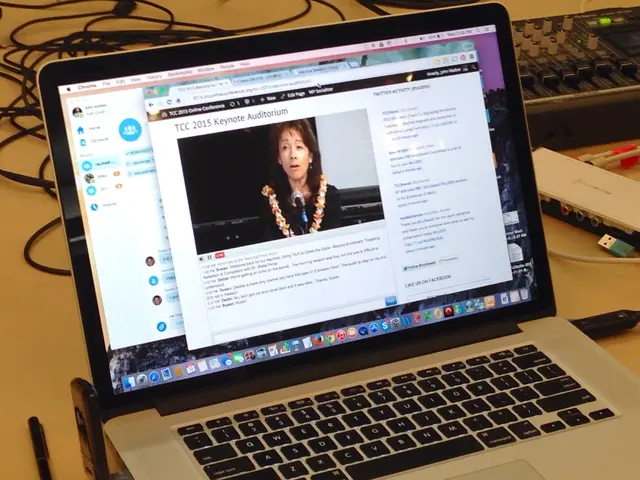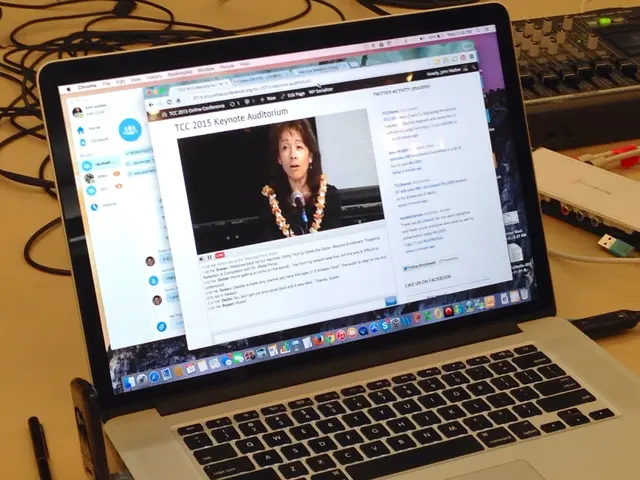Space-Aged Internet: The Rising Competition for Starlink and Beyond
Escalating rivalry in the Starlink domain - intensified rivalry for Starlink's satellite internet market share
Hey there! Ever felt frustrated with slow rural internet or promised 5G that never quite delivers in the city? Well, prepare for a change — space is about to bring high-speed internet straight to your doorstep, no matter where you are. With the rise of satellite internet, companies are launching satellites left and right, aiming to provide a cable and mobile tower-free internet solution for everyone. And the big players in this celestial race aren't backing down!
Personal satellites in your backyard? It might not sound like something out of a sci-fi movie, but it's already happening with SpaceX's renowned Starlink system. If you're interested, you can order a compact satellite dish for your outdoor space today! The connection is stable, fast, and ideal for streaming and working from home. The monthly cost? A pretty decent 50 to 100 euros — comparable to a fiber optic connection, but with the luxury of no excavators, construction work, or long waits.
But that's not all, folks! Amazon's jumping into this market with its Kuiper project. With plans to launch thousands of satellites into space by 2026, Amazon aims to bring internet to rural and remote areas. Initial launches and tests have been successful, with a planned service launch for end users scheduled for late 2025. By connecting its existing infrastructure — from cloud services to logistics — Amazon could open a new revenue stream and dominate the market.
The global race for satellite internet is undeniable; China, for example, is working on GuoWang, a mega-constellation aiming to launch over 13,000 satellites in the coming years. Part of these satellites will serve civilian purposes, while others will have military applications. Russia is also pursuing a similar project, Sphere, but is currently facing significant delays due to international sanctions.
Europe Joins the Race
Europe isn't sitting on the sidelines. The French-British company, Eutelsat-OneWeb, is working on a satellite network meant to support businesses, schools, aid organizations, and authorities. Private customers can also get in on the action, thanks to intermediaries like SkyDSL, with packages starting at just 17 euros per month. The EU is also planning its own joint satellite project, IRIS2, which aims to provide a secure and efficient platform for European data streams.
The advantages of satellite internet are obvious — especially in underserved areas where traditional internet providers turn a blind eye. Compared to some costly rural internet options, satellite services offer a serious alternative. While households in remote locations might pay around 40 euros per month for just 16 Mbit/s, Starlink or soon Kuiper offer faster speeds at competitive prices. That said, it's essential to consider that such services do not always provide the same legal protections as traditional internet providers, as consumer advocacy organizations like the consumer protection center have pointed out.
In short, the future of internet access is looking up! Satellite internet is no longer just a last resort — it's becoming a promising and competitive alternative to traditional cable, DSL, and LTE connections. With the first generation already available and new offers on the horizon, those living in poorly-served areas should keep an eye on the satellite internet scene. The race is on, and the winners might just change the world.
- Satellite
- Satellite internet
- Starlink
- Amazon
- Europe
- SpaceX
- Streaming
- Consumer Protection
Enrichment Data:
The Current Status of Major Players in Europe's Satellite Internet Market:
Current Status of Key Players
Starlink
- Market Impact and Competition: The European Union is assessing Starlink's market impact as part of the review of SES's proposed acquisition of Intelsat. This review could shape the future of Europe's space and satellite internet landscape[1][3].
- Regulatory Position: Starlink's rapid rollout and strong market presence is drawing scrutiny from the EU, which could impact how other satellite internet services are perceived and regulated[1][3].
Amazon's Kuiper Systems
- Project Progress: Amazon's Kuiper Systems is actively developing its satellite constellation, but it has yet to make a significant impact in the European market. The project aims to provide worldwide high-speed internet but faces stiff competition from established players like Starlink[4].
- Launch Plans: Amazon plans to launch Kuiper's constellation in phases, but specific timelines for European deployment have not been clearly defined yet.
Eutelsat-OneWeb Partnership
- Collaboration Details: Hughes Europe and Eutelsat have partnered to expand high-speed satellite broadband across Europe using OneWeb's network. This collaboration combines Hughes' ground equipment and managed services with Eutelsat's OneWeb satellites, offering enhanced connectivity for various sectors[4].
- Market Position: This collaboration boosts European-based connectivity solutions, providing alternatives for underserved areas and addressing gaps in traditional networks[4].
European Broadband Market Context
- Growth and Trends: The European broadband market is experiencing rapid growth, driven by demand for ultra-fast internet backed by initiatives like the EU's Digital Decade. This favorable environment benefits satellite internet providers by increasing demand for high-speed connectivity solutions[5].
The Commission has also adopted a proposal for a regulation on the establishment of a European Data Protection Supervisor, overseeing the use of satellite internet services, ensuring the protection of consumer privacy and personal data in line with the European Union's data protection regulations. The rapid technological advancements in space-and-astronomy, driven by projects like Starlink and Amazon's Kuiper, necessitate a keen focus on science and technology to maintain Europe's competitive edge in the satellite internet market.




